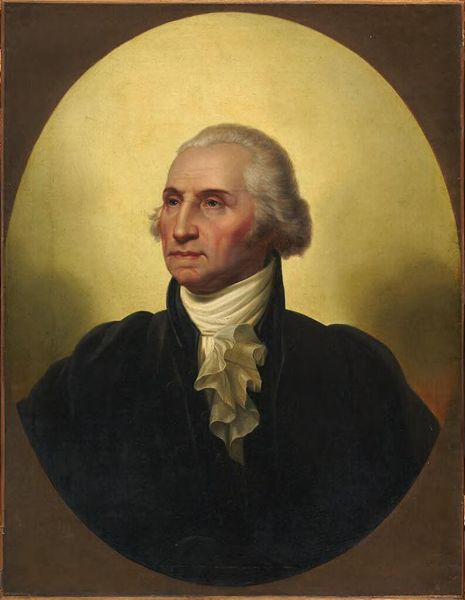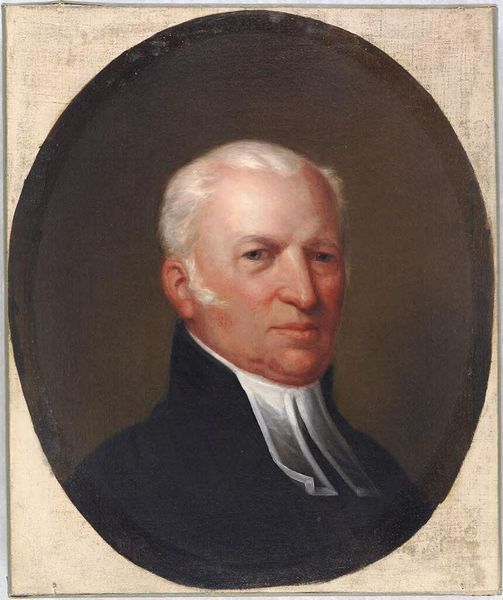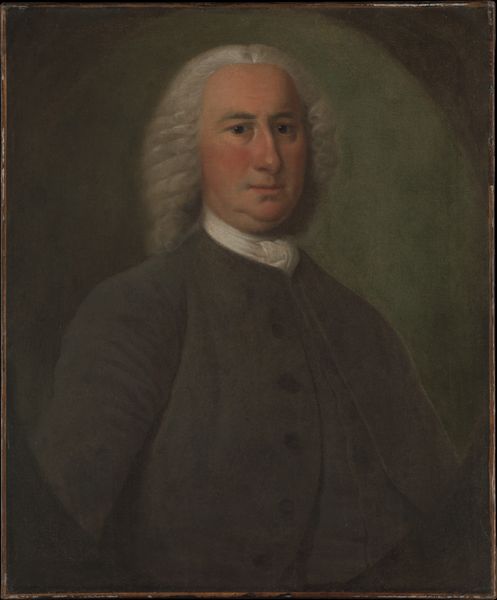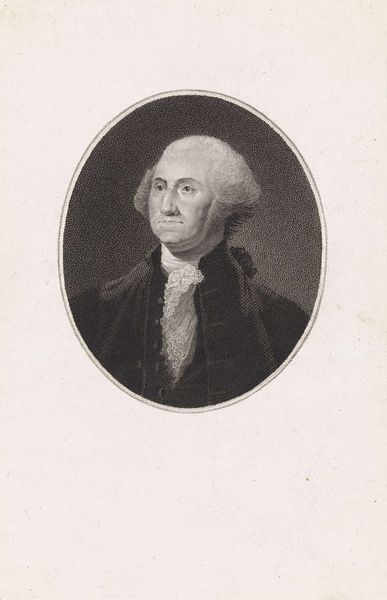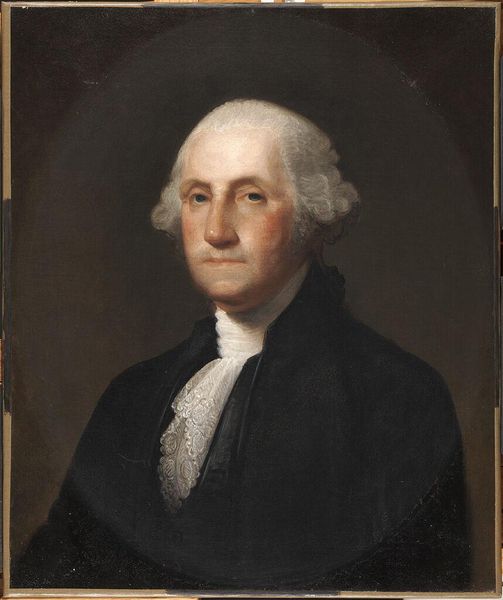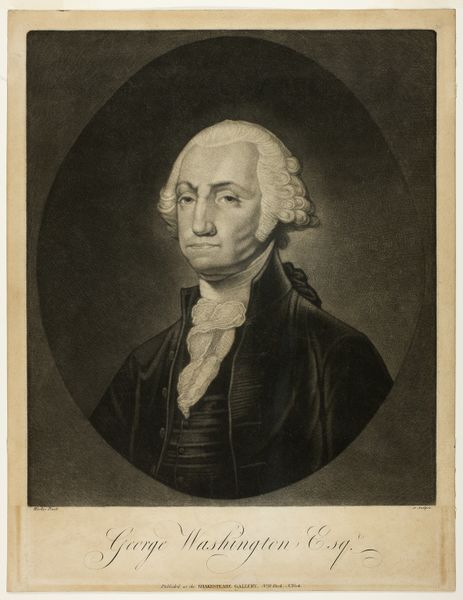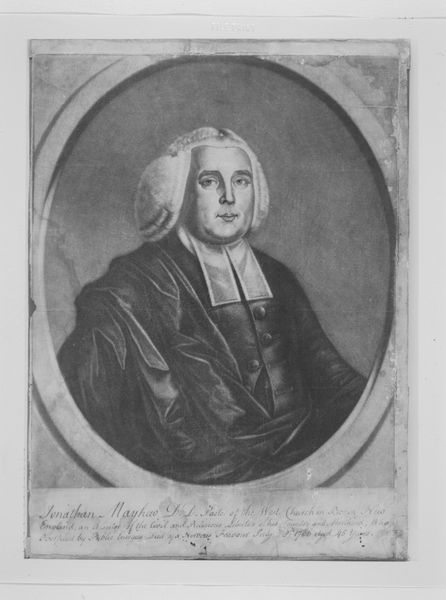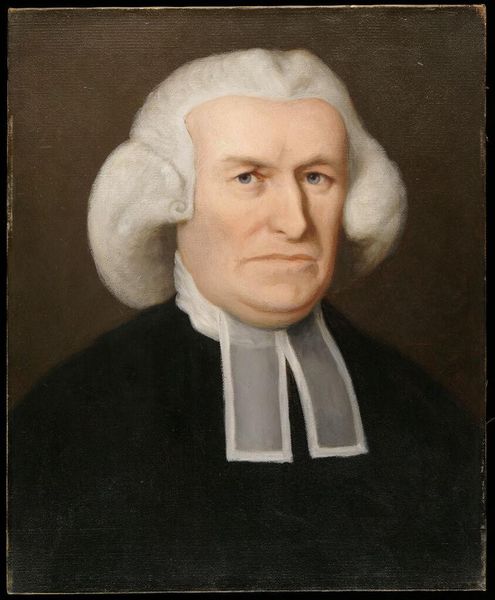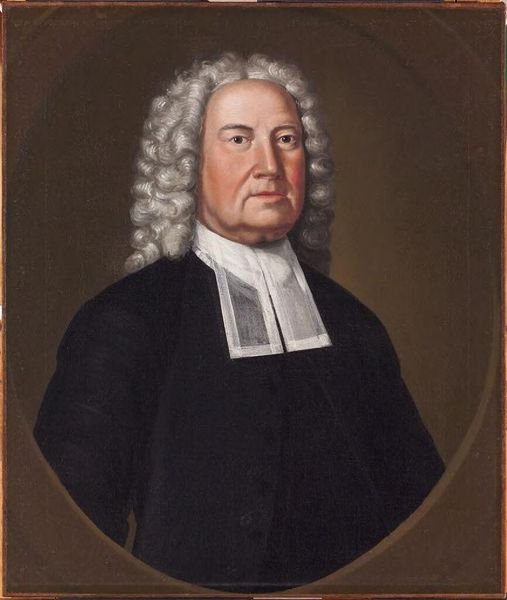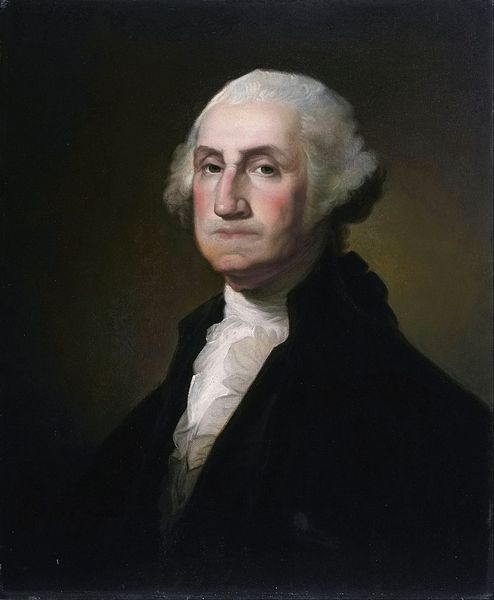
Rutger Jan Schimmelpenninck (1761-1825). Raadpensionaris van de Bataafse Republiek 1800 - 1810
0:00
0:00
oil-paint
#
portrait
#
oil-paint
#
romanticism
#
history-painting
Dimensions: height 50.5 cm, width 39.3 cm
Copyright: Rijks Museum: Open Domain
Editor: We're looking at a portrait of Rutger Jan Schimmelpenninck, painted between 1800 and 1810 by Charles Howard Hodges, using oil paint. The oval composition and restrained color palette strike me as quite formal and somewhat severe. What catches your eye, and how would you approach interpreting its visual language? Curator: The severe formality you observed is critical to understanding its structure. Notice how the oval format and the sitter's frontal pose reinforce a sense of containment and order. The composition hinges on a play of geometric forms: the rigid collar, the circular ruff, and the soft curves of the face, all contained within the rigid frame. The restrained palette is far from simple, though. Consider the subtle modulation of light and shadow that models the face, lending it depth and volume. This highlights not only the sitter's position, but also the artist’s craft. Editor: That's a fascinating way to see it – focusing on shapes rather than just likeness! I guess I was expecting some grand narrative given his position in history. Curator: Indeed. The subject's historical importance recedes, becoming secondary to the artwork's internal dynamics. The relationship between the color of the sitter’s skin, hair, and surrounding robes serves a purely compositional end, emphasizing symmetry. The painting presents an intriguing puzzle. Editor: It's making me consider how form and presentation, rather than subject matter, shapes meaning and the way the piece commands the space around it. Thank you for pointing out that the story of a painting can be found even in its internal elements! Curator: The visual organization can certainly guide or alter our narrative impressions. Considering the artwork’s construction of lines and shape might allow viewers to adopt new, personal interpretations of history paintings, like this one.
Comments
No comments
Be the first to comment and join the conversation on the ultimate creative platform.
